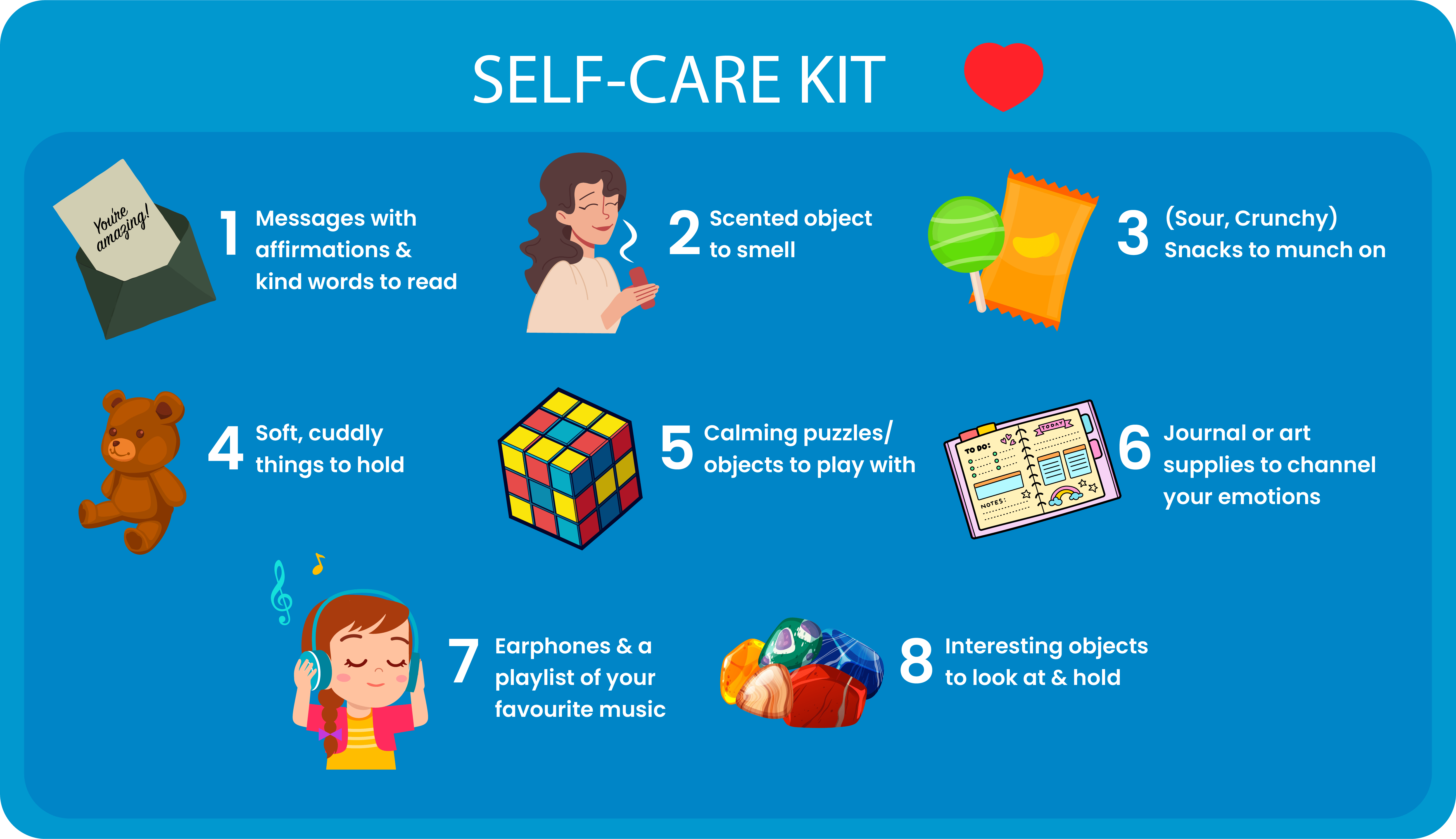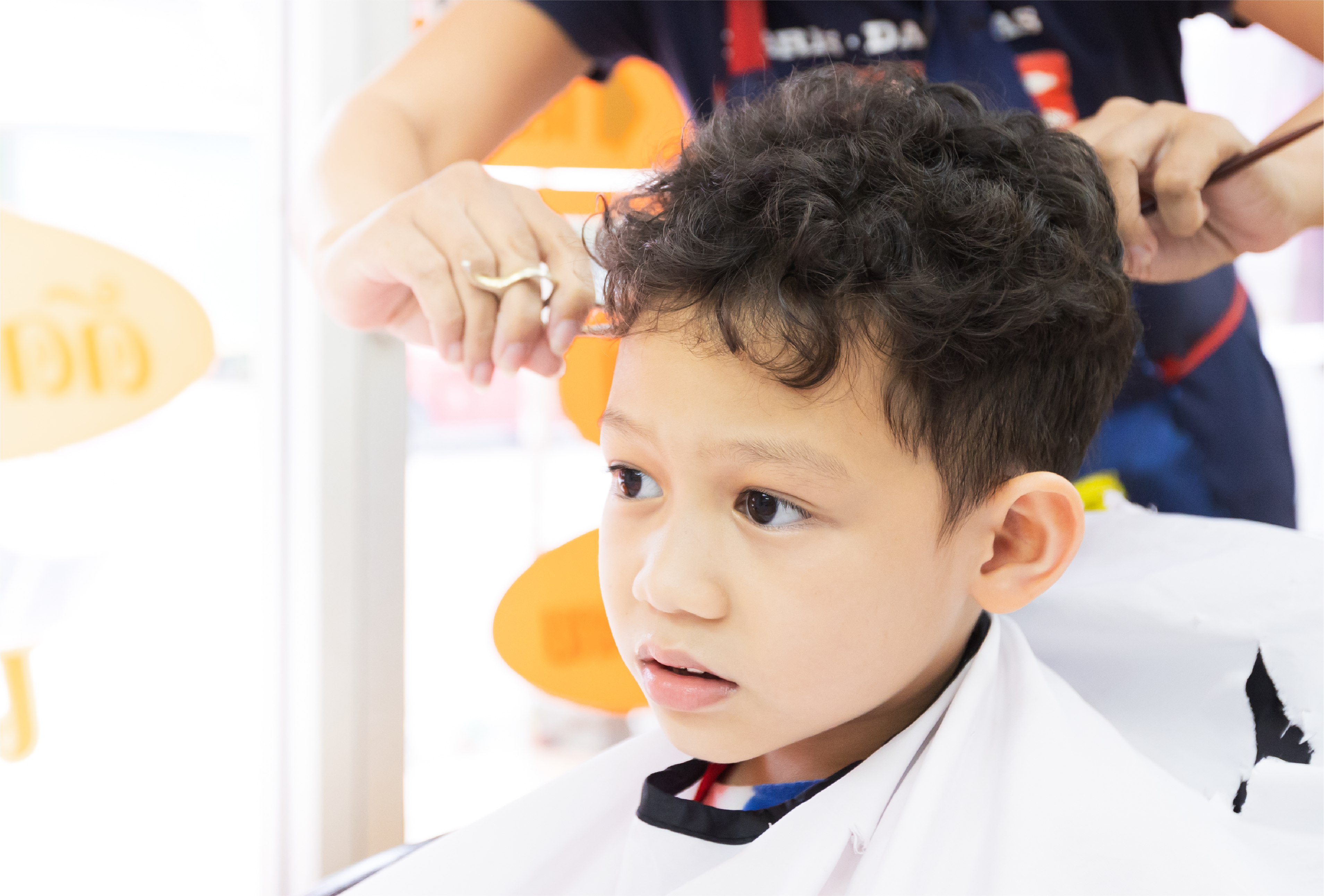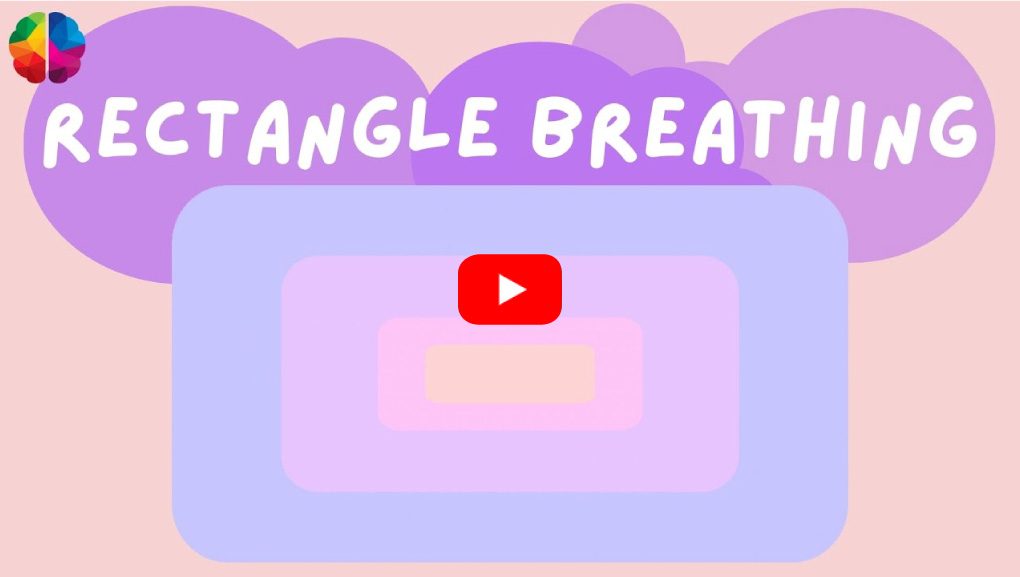Managing Anxiety in Autistic
Children and Teenagers
Managing Anxiety in Autistic Children and Teenagers
About anxiety in autistic children and teenagers
About 40 percent of children with autism spectrum disorder (ASD) also have an anxiety disorder (Steensel, Bögels, & Perrin, 2011). Their anxiety may not show typical signs like excessive worry or talking about their feelings. Instead, it might appear as intensified common autism traits, making communication and social interactions even more challenging.

Learn more about
How can you help your child manage their anxiety?
Help your child learn to recognise what anxiety feels like
Interoception is the sense that helps us understand internal body signals, like hunger or a racing heart. In autistic children, difficulties with interoception can make it hard for them to recognise signs of anxiety, as they may struggle to notice or interpret these internal cues.
Your autistic child might need to learn what anxiety feels like in their body. For example, when feeling anxious, their palms might get sweaty, their stomach could feel strange, their heart might beat faster, or their hands might flap.
You could try using a body check chart. Draw an outline of a person’s body and have your child colour or point out what happens in each part of their body when they feel scared or worried. This can help them identify and understand their physical responses to anxiety.
Learn more about how to help your autistic child learn what anxiety feels like in their body at
Self-calming and relaxation strategies
Self-calming and relaxation strategies can be very helpful for managing anxiety. You can help your child learn ways to calm down when they start feeling anxious or stressed. It’s best to stick to a few techniques that your child can learn and feel confident using.
Some strategies may work better in different situations. When exposed to a stressful situation, engaging in a favourite activity can help your child tolerate it until the event is over.
These might be as simple as closing their eyes and counting slowly to 10, or going to a quiet area, or doing physical exercise. Other strategies include:
Deep breathing

Calming Belly Breathing for Kids – Blowing Candles | Mindfulness
Muscle tension and relaxation

PROGRESSIVE MUSCLE RELAXATION for children Guided Session Compilation
Mindfulness practices
Grounding techniques

The 5-4-3-2-1 Method: A Grounding Exercise to Manage Anxiety
The 5-4-3-2-1 grounding technique utilises the five senses and can be paired with a DIY grounding kit which contains items familiar to your child, e.g. a favourite stuffed toy, stress ball, essential oils, chewing gum/candy, etc.

Get your child to practise these strategies when they’re calm. Once they know the strategies well, gently guide them to use them when they feel anxious.
For autistic individuals, traditional mindfulness or meditation techniques that require sitting still in silence might be challenging. It’s perfectly okay for them to move around, have their eyes open or closed, stim, or have music in the background.
Mindfulness practices will look different for each person. The most important thing is that these techniques are accessible and can be modified to support everyone’s well-being.
Visual tools to help autistic children and teenagers prepare for anxious situations
To make the environment more predictable, use visual aids like timetables, schedules, and sequences for daily routines (e.g., dressing, washing). Social stories can prepare your child for situations that make them anxious.
For example, if your child gets anxious when you drop them off at school, take photos of their daily activities – walking in the school gate, sitting in the classroom, playing sports, eating lunch, etc. You can also take photos of what you’ll be doing while you’re not together, like driving home, grocery shopping, gardening, and so on. Include a clear picture of you coming back to pick your child up.
If your child gets anxious when there’s a change in routine, daily or weekly visual schedules can help prepare them. When you know a change is coming up, like no swimming lessons during the school holidays, show this on the schedule. Leading up to the change, review the schedule regularly with your child so they know the weekly routine will be different.
Build up a tolerance for uncertainty
Although making their lives more predictable can help children manage anxiety caused by uncertainty, it can also lead to an over-reliance on routines. Since uncertainty is unavoidable, it’s important to help children build tolerance for it.
One effective method is to gradually introduce uncertainty in a structured environment and encourage children to manage their anxiety. For example, if a child becomes upset when routines are disrupted, help them assess how significant these changes are (e.g., is sitting in a different seat at lunch more upsetting than using different cutlery?) and explore their feelings when disruptions occur.
Introducing uncertainties during play can also help. For instance, asking children to guess what’s inside a bag by feeling its texture helps them practise dealing with uncertainty.
Opportunities to practise handling anxious situations
For example, if going to the hairdresser makes your child anxious, you could take them for a practice run during a quiet time. Ask the hairdresser if you can go through the steps together or let your child watch someone else get a haircut.
If social situations make your child anxious, you can practise these together by role-playing different scenarios. Keep the scenarios short and simple and encourage and praise your child throughout the practice.

When to seek professional help?
Anxiety disorders are separate from autism and can be treated. When anxiety disrupts life for a long time, it is considered an anxiety disorder. With the right coping skills and support, most people can manage their symptoms.
If your child’s anxiety is impacting their daily life, seeing a child psychologist can be very helpful. A child psychologist can work with your child and family to develop strategies for reducing anxiety, providing a safe space to explore their anxiety, identify triggers, and learn coping skills.
Psychologists use a range of approaches such as cognitive behaviour therapy, gradual exposure and social stories.
Medicine can also reduce anxiety symptoms in autistic children. It’s usually recommended only when anxiety is affecting a child’s everyday life and other strategies haven’t reduced the anxiety enough. You can speak to your paediatrician about this option.


